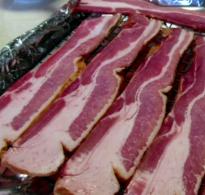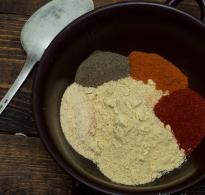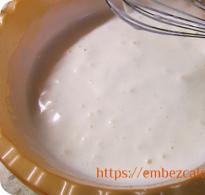Beer cocktails and whether it is possible to mix beer. What alcoholic drinks should not be mixed with each other?
Frank Sinatra once joked: “Alcohol may be man’s most dangerous enemy, but the Bible says: love your enemy.” Many consider this joke a call to action, trying to make alcohol their best friend, moreover, from several of its types at once. Everyone has also experienced the disastrous consequences of mixing alcoholic drinks, but few people are stopped by this before new experiments. Vodka plus beer, beer plus tequila, tequila plus champagne... And all this in one evening. What will the liver say? What about the pancreas? What about the brain? The brain will lose the power of speech and the ability to think, if, of course, it existed at all. Because only those who don’t have it can afford to mix alcohol. This is what toxicologists say, who have compiled a list of the most dangerous combinations of alcohol.
Vodka and beer
What is the danger: Everyone knows that vodka without beer is money wasted. But with beer - absolutely not in vain! The intoxicating effect of strong alcohol, enhanced by beer carbon dioxide, occurs instantly. Alcohol is absorbed into the blood faster and the final stage of intoxication immediately sets in: face down in the salad. If that is the goal of drinking, then, of course, vodka and beer is the fastest way to achieve it.
What to do: If you drink vodka with something, it’s better plain water or natural juice. Beer also doesn’t need to be mixed with anything, except maybe fish.

Wine and beer
What is the danger: Beer and wine in the same stomach are antagonists who cannot tolerate each other’s presence. They start battles without declaring war, the victim of which, of course, is the one who gets the idea to mix them up. A weak stomach will not be able to withstand such abuse by the end of the evening, but a more seasoned one will endure it until the morning in the hope that maybe it will work out. It won’t work out, and he will have to turn the consequences of the “war” inside out. A mixture of beer and wine, despite their harmless degrees, causes a classic hangover that makes you regret that you lived to see this terrible day.
What to do: Don't drink! Anyway, beer and wine. And under no circumstances should you fall for provocations like “weak”!
Tequila and beer
What is the danger: Tequila itself is an aggressive environment that eats up everything, including the stomach. TO terrible hangover from tequila in large doses leads to a whole complex of aldehydes (formaldehyde, 5-methylfurfural, diacetyl, furfural, acetaldehyde) and methyl alcohol. Well, beer only enhances their effect, helping carbon dioxide to absorb all these toxic substances at increased speeds. The consequences are still the same: a sore head, an indignant liver, an inside-out stomach and legs that won’t move.
What to do: Wash down tequila with non-carbonated and non-alcoholic drinks. But the best “companion” of tequila, as they say in its homeland, is sangrita – a spicy tomato drink.

Wine and vodka
What is the danger: This couple is probably the most dangerous alcoholic combination. Wine tannins irritate the walls of the stomach and “drink” all the water from the body. Vodka accelerates all these destructive processes. Nevertheless, among lovers of extreme alcohol, the “Smashing Hammer” wine-vodka cocktail, which contains 150 g of red wine and 200 g of vodka, is in considerable demand. Anyone who dares to try this deadly drink on their body will certainly want to look into the eyes of the person who invented it the next morning in order to give it a real hammer between them.
What to do: Stop your choice on one thing - brutal vodka or noble wine. Stick to your position, even if the author of the Slaying Hammer himself tempts you.

Liqueur and anise drinks
What is the danger: Anise drinks- a storehouse of fusel oils, which, in combination with artificial colors and flavors found in sweet liqueurs, guarantee green skin, unbearable headache and immediate dehydration. So the lady's drink turns into a hellish mixture, causing a non-lady hangover.
What to do: Like all incompatible alcoholic drinks drink separately, in different days, on different occasions and in different companies.
Alcoholic cocktails
What is the danger: Delicious and beautiful cocktails such as Cosmopolitan, Margarita, Daiquiri and other alcoholic mixes inspire confidence with their attractive appearance, but not danger. Meanwhile, in every glass of such a drink hides a real killer for internal organs. A mixture of strong alcohol, soda, syrup, juice is quickly absorbed into the blood, raising sugar in it, forcing all systems to work in extreme mode. And this is just from one “harmless” glass of a colorful cocktail. But the higher the dose, the more difficult it is for the body to recover, and the longer it takes to resume normal functioning of all organs.
What to do: Do not mix cocktails with alcohol! No matter how colorful and fashionable an alcohol-containing cocktail is, spare organs do not come with it.

Alcohol and carbonated drinks
What is the danger: This is the same catch as in the case of beer. Carbon dioxide, contained in soda, inevitably irritates the gastric mucosa, which promotes the immediate absorption of alcohol. A person gets drunk much faster and ceases to control the amount of alcohol he drinks. The situation is further aggravated by the fact that most carbonated drinks contain an excess of dyes and aromatic substances, which inevitably increases the load on the internal organs.
What to do: Drink alcoholic drinks with regular, still water. It’s better not to drink it, but to have a snack.

Alcohol and coffee
What is the danger: It is unlikely that anyone would think of drinking strong alcoholic drinks with coffee. But adding cognac or liqueur to coffee is a very common practice. Meanwhile, experts say that alcohol in combination with coffee causes cerebral vascular spasm and the risk of a hypertensive crisis. The coffee-alcohol combination is strictly contraindicated for people with vascular diseases.
What to do: Add spice to your coffee not with alcohol, but aromatic spices and spices, and only if your health condition allows you to drink coffee at all.
We have all heard - and some, perhaps, have tried it ourselves - that you cannot mix beer with vodka. This, if not a fatal number, is at least dangerous. But there is still the killer cocktail “Ruff” and the saying “vodka without beer is money down the drain.” So, is it possible to mix beer with vodka? And if you can’t, then why? The answers are given by chemists Ivan Sorokin and Ilya Gorbunov and co-owner of Time Out Bar, “We’re Not Going Anywhere”, and “Prozhektor” Alexander Kan.
IVAN SOROKIN
chemist, teacher at Moscow State University named after M.V. Lomonosov
Individual reaction to various types alcoholic beverages is determined primarily by the impurities they contain. Beer is a fermentation product, and the set of substances present in it in trace quantities differs markedly from the similar set for vodka, which is a product of distillation or rectification (not to mention the fact that the raw materials may be different).
By mixing different types of alcohol-containing solutions, you can increase the spectrum of these same impurities in your body. How exactly this will affect digestion and general well-being is quite difficult to understand (and there are no reliable studies of this kind to date). But there is another aspect: there is a 2007 study authored by physician-scientists Roberts and Robinson, where there is a correlation between blood alcohol levels and the order of drinking beer and, say, vodka. It turns out that with a “lower degree” the degree of intoxication is ultimately lower: undiluted strong alcohol passes your digestive system a kind of express train, without having time to be well absorbed. But if you pour vodka into the beer present in the stomach, then all this will hang out there for a long time, therefore, it will have time to be better absorbed, which will lead to more severe intoxication. Of course, this explanation is still not capable of describing the devastating effect of the Ruff cocktail, but what can you do?

ILYA GORBUNOV
student at the Institute of Chemistry, St. Petersburg State University
In fact, you can mix anything. Another thing is what consequences this will have. The whole secret is in the “magic bubbles” contained in beer and the high concentration of alcohol in vodka. The carbon dioxide contained in beer irritates the walls of the stomach and thereby accelerates the absorption of liquid into the stomach. gastrointestinal tract. Alcohol enters the blood faster, the liver does not have time to process such amounts of ethanol, it rushes into the brain and, as a result of a chain of biochemical processes, impairs communication between neurons in the areas of the brain responsible for memory formation, decision-making and impulsive behavior. The body will consider this an attempted murder and will turn on defense mechanisms that will help it cleanse itself as quickly as possible. In other words, vomiting and the like will occur.
Now imagine what kind of effect you can expect from carbonated absinthe - it’s better not to try.

Alexander kan
co-owner of bars Time Out Bar, “We’re not going anywhere”, “Prozhektor”
Who told you that you can’t mix vodka with beer? There are very popular cocktail The Moscow Mule features Russian vodka, American ginger beer, Angostura and lime juice. This American classic 1940s. The whole world drinks this cocktail and feels great in the morning. It's about quality ingredients.
illustration: Olya Volk
Beer can be drunk not only in pure form, also on its basis one obtains original cocktails. We present to your attention ten best cocktails with beer according to the editors of our site. Each of the proposed drinks is easy to make at home. When compiling the rating, we were guided by popularity, ease of preparation and availability of ingredients.
1. “Ruff” (vodka with beer).
Mixture causing rapid intoxication. Carbon dioxide irritates the stomach lining, causing alcohol to be absorbed into the blood faster. Despite this, the cocktail is very popular in Russia. According to one version, it was invented by Russian merchants who, after a feast, poured all the alcohol into one container.
- vodka – 60 ml;
- beer – 400 ml.
It is better to take a dense beer with a bright hop flavor that drowns out the vodka.
Recipe: add beer to a mug cold vodka and drink in one gulp.
A variation of “Ruff” is the effervescent cocktail “Chpok”. To prepare it, just mix 100 ml of vodka and 50 ml of beer (preferably “Zhiguli”) in a faceted glass, then cover the glass with your palm, turn it over, hit it on your knee, turn it back, remove your palm and drink quickly. The cocktail is named after the sound you hear when you hit your knee.
 "Ruff"
"Ruff" 2. "Cyclist".
A simple, refreshing beer cocktail. The recipe was invented in Germany in 1922. At that time, the route of the Munich bike ride passed near a small tavern. There were too many people wanting to quench their thirst; the owner realized that there wasn’t enough beer for everyone. Then he diluted it halfway with lemonade. The visitors liked it.
- light beer – 100 ml;
- lemonade – 100 ml.
Recipe: mix cold lemonade and beer in a shaker, pour the resulting cocktail into a tall glass, and garnish with lemon on top.
Cocktail “Cyclist”3. Brut beer.
A mixture of beer, champagne and herbal liqueur. It turns out unusual combination with a pleasant taste.
- light beer – 100 ml;
- champagne – 100 ml;
- Benedictine liqueur – 10 ml.
Recipe: Cool all ingredients, pour beer into a glass, add champagne and liqueur, then stir.
 Brut beer
Brut beer 4. "Kolavaitsen".
A German cocktail with an unusual, memorable taste, is popular among young people. Rarely found in Russia.
- Coca-Cola (Pepsi) – 100 ml;
- wheat beer – 200 ml.
Recipe: Mix cold cola and beer in a shaker, pour the cocktail into a glass.
 Kolavaizen
Kolavaizen 5. "Beer scoundrel."
A cocktail for men's company with a sharp, burning taste.
- vodka – 50 ml;
- beer – 200 ml;
- tomato juice– 30 ml;
- ketchup – 2 tablespoons.
Recipe: add ketchup and tomato juice to a glass, pour in beer. Then carefully pour vodka in a thin stream. The cocktail is drunk in one gulp without stirring.
 Beer Rascal
Beer Rascal 6. "Black Velvet".
Considered a women's cocktail. It has a beautiful color and unsurpassed taste.
- dark beer (preferably Guinness) – 150 ml;
- champagne – 100 ml.
 Cocktail “Black Velvet”
Cocktail “Black Velvet” 7. "Burning Dr. Pepper."
A spectacular beer cocktail with a memorable taste.
- dark rum (whisky) – 25 ml;
- Amaretto liqueur – 25 ml;
- light beer – 200 ml.
Recipe: pour beer into a glass, add liqueur. Light the rum in the glass and pour it into a glass. Drink in one gulp.
 Burning Dr. Pepper
Burning Dr. Pepper 8. Monaco.
Glamorous women's cocktail with a complex bittersweet taste.
- pina colada syrup – 30 ml;
- light beer – 300 ml;
- lime juice – 5 ml;
- pineapple – 1 slice.
Recipe: pour beer and syrup into a glass, add lime juice, mix well. Garnish with a pineapple slice. Drink through a straw.
Cocktail "Monaco"9. “Beer with sour cream.”
Illustration copyright Thinkstock Image caption In the morning it is sometimes difficult to remember what you mixed, or whether you mixed it at all.
Many are sure that mixing wine, beer and spirits during a feast ultimately causes a severe hangover. Is this true? Let's study the facts.
A well-known saying in the English-speaking world warns against mixing wine and beer on the same evening: “it’s either the grapes or the grain.” We often hear stories from those who, waking up in the morning feeling unwell, with excruciating thirst and a pounding head, consider carelessly mixed drinks to be the cause of their hangover.
In addition, there are theories about the order in which alcohol can be mixed. For example: “Beer after wine and you’ll feel dizzy... Beer before wine and you’ll feel like a cucumber.” Or vice versa? After a few glasses you won’t remember. Moreover, the validity of these theories is highly questionable. Is there any real evidence that drinking beer after wine (or vice versa) makes hangovers worse?
According to a study published in 2000, the main symptoms of a hangover include dehydration, changes in the body's levels of hormones such as aldosterone and cortisol, and toxic poisoning directly with alcohol. In addition, there is evidence that work is being disrupted immune system, which may cause headache, nausea and apathy.
The two main factors influencing the severity of a hangover are fairly obvious. The higher the alcohol content of a drink and the faster you drink it, the worse your hangover will be. But this is in general. The same amount of alcohol can cause hangovers of varying severity under different circumstances.
Based on the available evidence, it cannot be said that hangovers are caused by mixing drinks
Many people say that they don't get hangovers, and no one can scientifically explain why. In a study of young Danes on holiday, nearly a third of those who drank at least 12 alcoholic drinks (about four half-liter bottles of beer or four 250-milliliter glasses of wine) somehow avoided a hangover.
Mixing drinks does not always lead to an increase in the total volume of alcohol consumed, but this is exactly what happens with cocktails. By mixing three or four servings of strong alcohol with other ingredients, you can end up with a heavy head and a “dry head” in the morning simply as a result of the fact that you drank more in total.
In addition to ethanol, which leads to intoxication, other important ingredients that influence the severity of a hangover are the so-called congeners, biologically active ingredients. These are substances resulting from fermentation, such as acetone, acetaldehyde, fusel oils and - the most famous - tannins, which give color and characteristic astringent taste darker drinks. For example, bourbon (a type of whiskey) contains 37 times more congeners than vodka.
Students who drank bourbon rated their hangovers as more severe. But at the same time, they completed reaction speed tasks with the same success as the other group.
To understand how these substances affect the severity of a hangover, American researchers recruited university students who drank regularly but had no problems with alcohol. In the evenings, they were given either bourbon and cola or vodka and cola, or a placebo consisting of cola and tonic water with a few drops of bourbon or vodka added to make the drink taste like a real alcoholic cocktail.
They drank from three to six drinks, achieving a concentration of 0.11 grams of alcohol per 100 milliliters of exhaled air. Thus, the level of alcohol content allowed while driving was exceeded by the subjects by 2-5 times (depending on the laws of a particular country).
Afterwards, they spent the night in the clinic and were woken up at 7am for breakfast, followed by a series of tests. For this they received a very generous reward, 450 US dollars. The researchers found that students who drank bourbon rated their hangovers as more severe. It is interesting that they performed tasks on reaction speed with the same success as the other group.
So-called clear drinks such as white rum, vodka and gin probably cause hangovers less often and with less intensity, since their levels of congeners are lower. Perhaps those who mix their drinks are more likely to choose dark ones, which contain more of these substances, simply because they are more common.
But, again, it is not the mixing itself that is causing the problem.
Illustration copyright Thinkstock Image caption Scientists have not yet proven that beer cannot be mixed with wine.No scientist seems to have conducted a truly rigorous study in which people were asked to drink beer before wine and wine before beer. But perhaps it's not the "grapes or grains" that matter, but how the strength of these drinks affects our sanity.
Beer has about a third the strength of wine. Therefore, if you start with beer, the degree of intoxication of the body will be less than if you start with a stronger drink. But when someone starts with wine or strong alcohol, his mind will later be less critical of the intake more alcohol.
It is obvious that people do not adequately assess the degree of their intoxication. At first they overestimate their blood alcohol level, but after a few drinks they begin to underestimate it.
Therefore, based on the available evidence, it cannot be said that hangovers occur as a result of mixing drinks. Rather, its cause may be the congeners contained in alcohol and... excessive libations.
As for getting rid of a hangover, scientists have studied this issue. The respected British Medical Journal published a 2005 review of remedies ranging from borage to artichoke and from glucose to prickly pear cactus.
The bad news for drinkers is that none of these recipes work.
If the morning after the feast your health is not good, you can consider that the holiday was a success. But, jokes aside, there is nothing good about overloading the body like that. To avoid the morning after the holiday, you should not drink too much alcohol. You should also not mix different alcoholic drinks - for example, it is better not to drink beer.
Why beer doesn't go well with vodka
Firstly, adding vodka to beer spoils the taste of the drink. Secondly, mixing these drinks is simply harmful and deals a crushing blow to the body. Beer is quite jealous of the presence of another drink in the body.
Beer with a high alcohol content contains additives - they, in turn, contain large quantities of various compounds, which the liver generally processes quite well. They even have a completely beneficial effect on the body - provided that the beer is good, without chemical additives. But if it contains impurities, ethyl alcohol the liver begins to process precisely these substances.
If a person decides to drink beer, the consequences may not be particularly pleasant. Against the background of a stronger alcoholic drink taken earlier, the level of ethanol in the blood will rise quickly and cause a severe state of intoxication.
The harm of alcohol
Some people are confident that there will be no harm when drinking alcoholic beverages made from similar natural raw materials. What if you start with less strong drinks By gradually switching to products with a high alcohol content, the body will not be damaged.
Vodka and beer are drinks made from raw materials of the same nature, that is, from grain. There is an opinion that when drinking different alcohol from the same group, in small portions, and also observing the rule of “increasing the degree,” no damage will be caused to the body.
But that's not true. Malt and yeast present in beer do not combine well with alcohol. When drinking both vodka and beer, a peculiar reaction of the liquids occurs, and then breakdown into toxins. This is the cause of the morning hangover. The result of mixing will be a blow to the brain, stomach and liver.
Despite the fact that beer is low alcohol drink, it does no less harm to the body than strong ones. Acetaldehyde– one of the breakdown products of alcohol – for human body is the strongest poison. If a person drinks low-strength alcohol, he only reduces the harm caused to the body, but does not get rid of it. Even drinking expensive drinks high quality, can only reduce the amount of poisons that poison the body, but does not completely save you from the harmful effects of alcohol.






